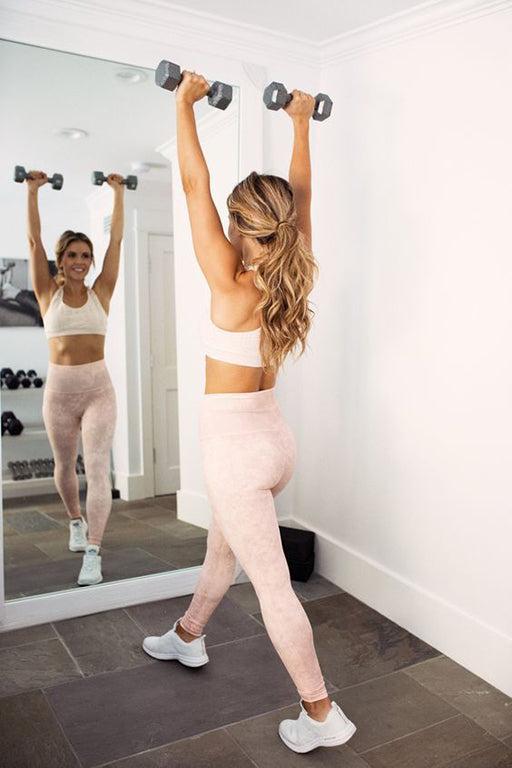7 Reasons Dumbbells Are Better Than Barbells

By Josh Bryant, C.S.C.S., for Muscle & Fitness
Look, we all know (and love) the feeling of putting up a big-number squat and slamming that barbell into the rack. It’s noisy, it’s impressive, and that barbell makes you look good.
But when it comes to building up your entire body—particularly in matters of core strength and muscle balance—consider trading that barbell for two dumbbells. Benjamin Franklin himself wrote in a letter to his son that “I live temperately, drink no wine, and use daily the exercise of the dumbbell.”
If you want to fully maximize your strength and put your muscles into hypertrophy, you should pick up dumbbells at least a few times during your training. Old Ben was right: Dumbbells are a perfect workout too. Here are seven reasons why.
Stabilization and Activation
Compare the stress on your the chest, triceps, and biceps when performing a barbell bench press, a Smith machine bench press, or a dumbbell bench press. They’ll all engage your chest and triceps—but once you try a dumbbell press, you’ll notice your biceps suddenly have to work a lot harder. Why? Dumbbells require greater stabilization. Since your arms can’t stabilize each other, you have more freedom of movement in each lift—and that forces your body to recruit more muscle fibers to stabilize your load.
Overcome Strength Imbalances
Dumbbells force your arms to work unilaterally. If one side is significantly weaker than the other, you can’t hide it. Over-compensation is impossible with dumbbells—unless you break form, of course—so they’re an effective tool against imbalances. If you get the feeling that you’re stronger on one side, try switching up your workouts to include dumbbells.
Safety
Barbells might be the preferred method for heavy squats and bench presses, but they do put you at a higher safety risk if you find yourself stuck under a rep without a spotter. If you trap your neck under a 225-pound bar, your ass is grass and the barbell is the lawn mower. With dumbbells, on the other hand, you’ve got a safety valve—just drop ‘em (not on top of anyone) and dust yourself off for the next set.
Extreme Intensity Techniques
For the solo athlete in the gym, certain types of training (like rest-pause mechanical-advantage drop sets and traditional drop sets) are simply easier to set up with dumbbells. The rack-and-run technique is exclusive to dumbbell training. Solo barbell training, in contrast, makes effective high-intensity techniques essentially impossible—not so with dumbbells.
Increased Range of Motion
One of the most effective ways to overload muscles for strength or muscle-building purposes is to increase range of motion. There is only so much range of motion one can accomplish with a row or press. But with dumbbell variations, you can extend the range of motion, adding a new dimension of overload to your go-to mass movements.
Movement Freedom
When bench pressing with a barbell, your arms and shoulders are in a fixed position and move through a set range of motion. In contrast, dumbbell presses allow you to alter the movement pattern slightly and let your shoulders move freely. Dumbbell pressing allows you to externally or internally rotate your shoulders or bring the dumbbells lower down or higher up your body to specifically target muscles and press pain free.
Injury Prevention
A high percentage of accidents at gyms occur near the dumbbell rack! This is usually a result of a lack of focus. Dumbbells don’t cause accidents, people do. In the long term, greater degrees of freedom in a more natural range of motion will result in fewer injuries. Further, by identifying and eliminating imbalances, the probability of injury GREATLY decreases.









Leave a comment